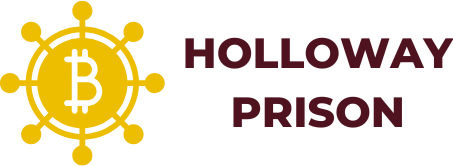In the fast-paced world of teamwork, keeping everyone on the same page can feel like herding cats—if those cats were also juggling flaming torches. Enter team performance apps, the superheroes of productivity that swoop in to save the day. These digital sidekicks help teams collaborate, track progress, and boost morale without requiring a cape or a secret lair.
Table of Contents
ToggleOverview of Team Performance Apps
Team performance apps play a crucial role in fostering collaboration and productivity among team members. These applications streamline communication, allowing teams to share ideas and updates in real-time. By tracking individual and group progress, they provide valuable insights into performance metrics that help teams identify areas for improvement.
Remote collaboration has become increasingly important, and these tools support seamless interaction regardless of location. Various features, such as task assignments and deadline reminders, enable team members to stay accountable for their responsibilities.
Analytics dashboards present a visual representation of performance data, making it easy to assess productivity trends over time. Integrating with existing workflows enhances the overall user experience and minimizes disruptions to established processes.
Moreover, team performance apps can boost morale by recognizing achievements and celebrating milestones. Surveys and feedback mechanisms allow team members to voice their opinions, fostering a sense of inclusion and engagement.
Examples of popular team performance apps include Trello for task management and Slack for communication. Each tool supports unique functionalities, catering to different team needs and preferences. Organizations can select apps based on specific requirements, ensuring optimal productivity for their teams.
Key Features of Team Performance Apps
Team performance apps include several key features that enhance collaboration, boost productivity, and improve overall team dynamics. These functionalities address common challenges in teamwork by ensuring seamless operations across various tasks.
Task Management
Task management features enable teams to prioritize and assign duties efficiently. Users can create task lists, set deadlines, and track completion status. Simplified organization of tasks reduces confusion around responsibilities. Color-coded systems provide visual cues to highlight urgent items, ensuring nothing falls through the cracks. Integration with calendars allows for automatic scheduling of reminders, keeping teams focused and accountable. Notable apps like Asana and Monday.com offer robust task management capabilities tailored for diverse workflows.
Communication Tools
Communication tools within team performance apps foster real-time dialogue. Instant messaging and channel features promote quick exchanges of information among team members. Video conferencing options offer a face-to-face alternative, essential for remote teams. Users can share documents and links directly within chat interfaces, enhancing collaborative efforts. Notifications and alerts keep everyone updated on important discussions and decisions. Platforms such as Microsoft Teams and Zoom exemplify effective communication tools that unify teams in their efforts.
Performance Tracking
Performance tracking features present valuable insights into team dynamics. Metrics such as task completion rates and individual contributions can be easily monitored. Visual dashboards offer a snapshot of productivity trends, helping teams identify strengths and weaknesses. Regular reports provide feedback, guiding future strategies for improvement. Encouraging self-assessment fosters a culture of accountability and professional growth. Tools like ClickUp and Wrike supply comprehensive tracking capabilities essential for enhancing overall performance.
Popular Team Performance Apps
Exploring popular team performance apps reveals a range of features designed to enhance productivity and collaboration. These applications cater to various team needs, ensuring fluid communication and effective task management.
App 1: Trello – Features and Benefits
Trello stands out for its visual task management system based on boards, lists, and cards. Users can easily create tasks, assign them to team members, and set deadlines. Collaboration becomes seamless as team members can comment on tasks and attach files. Integration with applications like Google Drive and Slack enhances functionality. Real-time updates keep everyone in the loop, boosting accountability and ensuring tasks progress without delays.
App 2: Slack – Features and Benefits
Slack excels as a communication platform focusing on real-time interaction. It provides channels for organized discussions, making topic-based conversation accessible. Team members can share files, conduct polls, and integrate with other tools like Asana and Google Calendar. Notifications ensure important messages aren’t missed, while search functionalities help locate previous conversations quickly. Slack fosters a team environment conducive to collaboration and innovation.
App 3: Asana – Features and Benefits
Asana simplifies project management with its task assignment and tracking capabilities. Teams can break down projects into manageable tasks and set priority levels. Visual project timelines help team members understand deadlines and dependencies. Integration with communication tools and file-sharing platforms enables fluid teamwork. Asana’s reporting features provide insights into team performance, facilitating data-driven decisions that enhance overall productivity.
Best Practices for Implementing Team Performance Apps
Selecting the right team performance app is crucial for maximizing productivity. Analyze team needs and identify goals before choosing an app. Involve team members in the selection process to ensure the chosen tool meets diverse preferences and fosters buy-in.
Establish clear objectives for using the app. Defining specific goals helps in measuring success and maintaining focus. Communicate these objectives to the entire team to align efforts.
Provide thorough training on app functionalities. Ensuring everyone understands how to navigate features promotes effective use. Schedule training sessions and create easy-to-access guides for ongoing reference.
Encourage frequent use of the app. Regular engagement with the tool facilitates better collaboration and improves communication. Set reminders or incentives to motivate team members to update progress and share insights.
Utilize analytics for continuous improvement. Review performance metrics regularly to identify areas for growth and celebrate achievements. Adjust strategies based on data and feedback, adapting workflows to enhance efficiency.
Gather regular feedback on the app’s effectiveness. Conduct surveys or hold discussion sessions to understand user experiences and pain points. Actively implement suggestions to refine processes and improve satisfaction.
Recognize and reward achievements within the app. Highlighting individual or team successes boosts morale and encourages ongoing engagement. Celebrate milestones and progress updates publicly to reinforce a positive culture.
Embracing team performance apps can transform how teams collaborate and achieve their goals. By streamlining communication and enhancing accountability, these tools create an environment where productivity thrives. The ability to track progress and celebrate milestones fosters a sense of community and motivation among team members.
As organizations navigate the complexities of modern work environments, leveraging the right performance app becomes crucial. With various options available tailored to different needs, teams can find the perfect fit to optimize their workflows. Ultimately, investing in these applications not only boosts efficiency but also cultivates a positive team culture that drives success.





